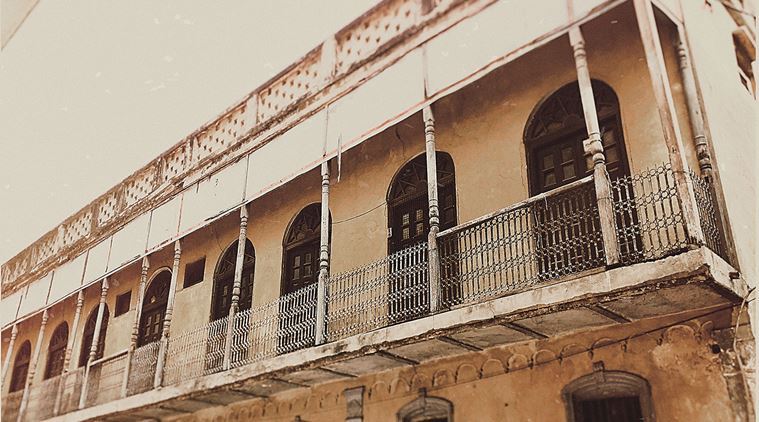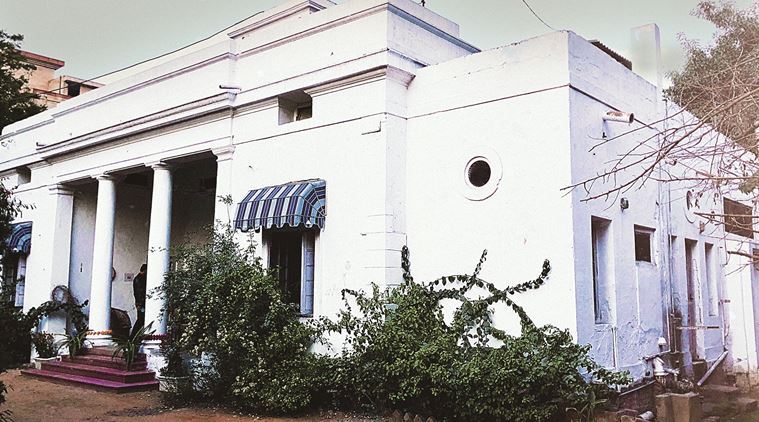Life of a City
An exhibition remembers Delhi before and after the Partition.

A house in Paharganj, Ram Nagar which was built in 1933. (Courtesy: Erin P Riggs & The 1947 Partition Archive)
Abdul Sattar, a retired bureaucrat remembers a gathering called ‘Diwan Khane’ that would take place in old Delhi before the Partition, where both Hindus and Muslims would gather, talk, and recite poetry. “The participation of both the communities was indicative of their relationships, as only very close friends would be extended an invitation to come and participate,” he says. Unlike, Bushra Rahman, who had migrated to Lahore, Sattar lived in Delhi. Rahman, in her interview, recalls her three-storey residence built by her father in Koocha Chehel Amiran, now Kucha Chellan, near Delhi’s Old Fort. She remembers: “The army had strict orders for train passengers going to Lahore. They had to be at refugee camps in the Old Fort. We stayed there for hardly two days and it seemed too long. It was stuffed with people. We used to sleep on stones and hygiene conditions were unbearable,” she says. These are some of the stories that make up “My Heart Belongs in Delhi”, an exhibition put together by The 1947 Partition Archive, a digital archive that has been documenting accounts of people who witnessed the divide. It looks at the transformation of the Capital from 1947 to the present through stories of those who fled the city for Pakistan, and those who arrived as refugees.
The exhibition has been curated by art historian Arshiya Lokhandwala, and features research by Erin P Riggs, a PhD Candidate at New York’s Binghamton University and Ritika Popli of Ohio University. “Delhi was majorly impacted by the Partition. Both because of its proximity to the border and Punjab and because of its status as the new nation’s Capital. Not only is Delhi a great example of a city that was majorly transformed by the Partition’s in and out migrations, it is also a post-Independence Indian city with layered histories, continuous change, and much diversity,” says Riggs, adding that Delhi had become a model for the newly independent India.
“Government policies and the actions of individuals collided and produced new understandings of what property ownership, public housing, and typical evolutions of dwelling spaces and streetscapes would look like, both in Delhi and urban India in general,”
she adds.
she adds.
In the exhibition, Riggs points out that Delhi’s thriving cosmopolitan culture before the Partition, where neighborhoods like Karol Bagh, Daryaganj, Ram Nagar in Paharganj, and Harphool Singh Basti in Sadar Bazaar — ones that seem dense and congested today — were characterised by exclusivity and grand houses. She also looks at neighborhoods that rapidly became congested after Partition, where incoming refugees squeezed into already existent spaces like open camps, evacuee properties left behind by out-migrants, homes of friends and family, and vacant government employee housing. She mentions the area of Nabi Karim in Paharganj, primarily occupied by a large graveyard before the Partition, which was later filled with inhabitants. The summaries about Delhi’s changing landscape were written by Riggs, based on nine months of archaeological survey and oral history work, which she completed in May this year as a part of a Fulbright-Nehru student research grant project.
But are we preserving remnants of the Partition well? “This is a complex question without an objective answer,” she says. “Our role, as an organisation, that preserves the stories of individuals is not to answer this question, but to present diverse opinions relating to this question. Objectively, we can say that Delhi has changed rapidly. While change brings progress, it also brings the end of certain lifeways and loved traditions. With this exhibit, we have tried to include stories from those who both mourn and champion Delhi’s changing built landscapes,” she adds.
The group had their first exhibition last year where they focused on “individuals and their stories for it was a little-known story, not as well-known among the younger generations,” says Guneeta Singh Bhalla, founder, and director of the archive. “Now as the momentum has picked up in the last two years, we wanted to start focusing on the micro aspects and themes. Since we are in Delhi, it seemed relevant to focus on the story of how it has transformed,” she adds.
The exhibition is on at India Habitat Centre till August 17.






















 Civil Lines Bunglow built in the ’30s. (Courtesy: Erin P Riggs & The 1947 Partition Archive)
Civil Lines Bunglow built in the ’30s. (Courtesy: Erin P Riggs & The 1947 Partition Archive)
No hay comentarios:
Publicar un comentario